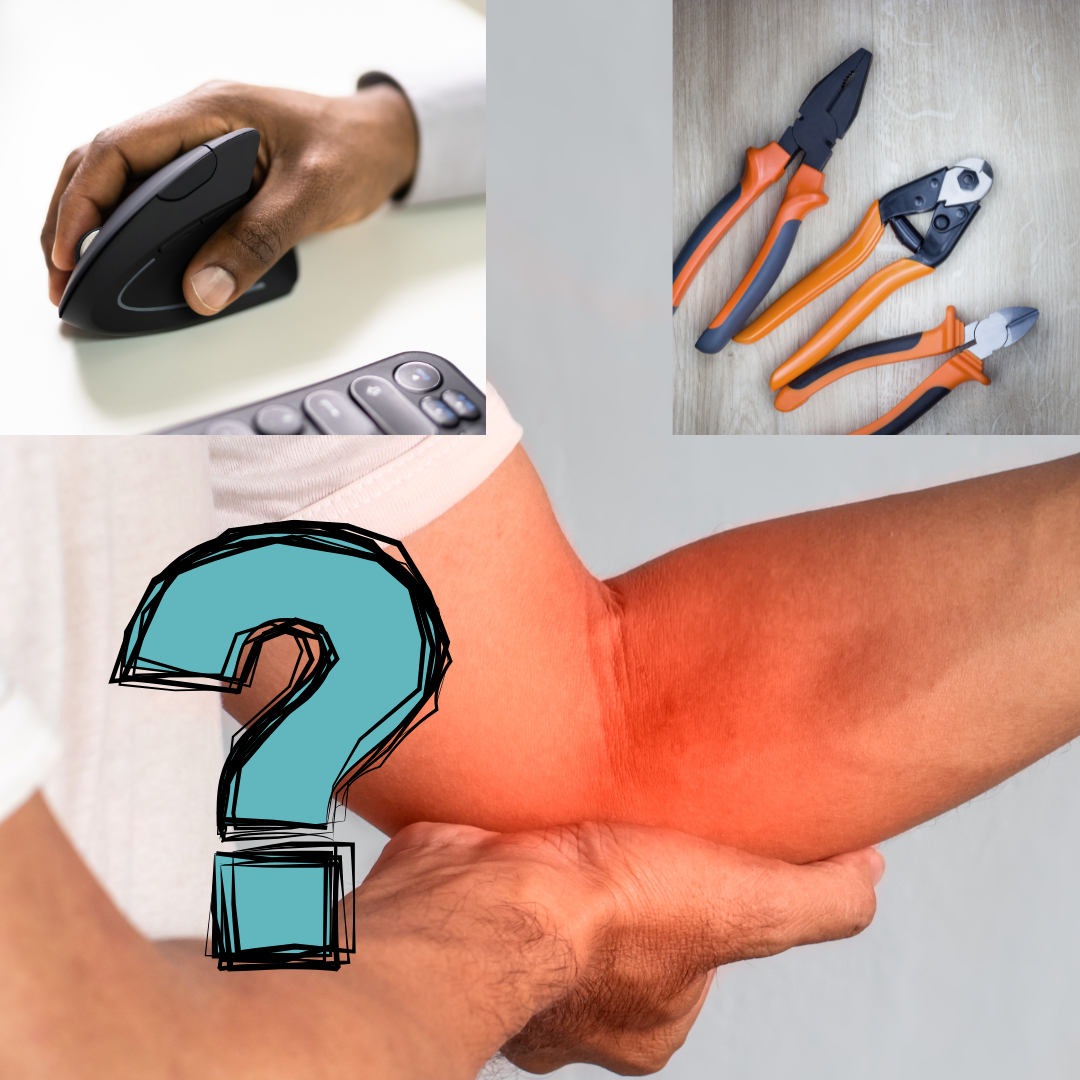Introduction
Golfer’s elbow, or medial epicondylitis, is a common overuse injury affecting the inner part of the elbow. While it’s often associated with golf, it can also develop from repetitive gripping, lifting, and wrist flexion in activities like weightlifting, carpentry, and even prolonged computer use. The good news? Small ergonomic adjustments can make a big difference in preventing and managing golfer’s elbow.
Why Ergonomics Matter
The way you grip and use your hands daily can place unnecessary strain on your forearm tendons. A standard mouse, tools, or even poor wrist positioning can force your hand and wrist into unnatural positions, contributing to stress on the inner elbow. Optimising your workspace and equipment can help relieve strain and promote long-term tendon health.

3 Key Ergonomic Adjustments for Golfer’s Elbow
1. Choose Ergonomic Equipment
A traditional mouse or manual tools can cause overuse injuries by encouraging improper wrist positioning.
TOP TIP: Use an ergonomic mouse, wrist support, or cushioned tool handles to maintain a neutral wrist position and reduce strain. This small change can significantly decrease tension on the flexor tendons attached to the inner elbow.
2. Adjust Your Workstation
Many cases of golfer’s elbow are linked to repetitive desk work, particularly incorrect wrist positioning while using a mouse or keyboard.
Quick Fixes:
- Keep your forearm level with the desk to avoid excessive strain on the wrist and elbow.
- Use a wrist rest to support your hands and maintain a more neutral posture.
- Ensure your chair and desk height align so that your arms are not constantly reaching or straining.
- Try this HSE workstation assessment to optimise your setup.
3. Modify Your Grip
Over-gripping, whether on a golf club, weightlifting bar, or hand tool, is a key factor in developing golfer’s elbow.
Better Techniques:
- Use a looser grip whenever possible.
- Opt for equipment with larger or cushioned handles to reduce hand and forearm tension.
- When lifting weights, use straps or proper form to prevent over-reliance on your forearm flexors.
Preventing Golfer’s Elbow with Exercise
Incorporating strength and mobility exercises can help condition your forearm muscles to handle repetitive movements without strain. However, be cautious with stretching, as an irritated tendon may react negatively to excessive stretching.
Check out my blog on five simple elbow stretches, but ensure you use them appropriately to avoid aggravating symptoms.
Seeking Professional Guidance
If you’re struggling with persistent inner elbow pain, early intervention is crucial. My FREE Golfer’s Elbow Masterclass will guide you through assessing your elbow to confirm the diagnosis and provide solutions for recovery.
Alternatively, my Online Golfer’s Elbow Program is available for just £59, offering expert-led strategies to help you fully resolve this issue at home.
Conclusion
Golfer’s elbow can be frustrating, but with simple ergonomic adjustments and the right approach, you can manage and prevent it effectively. Whether you’re an athlete, a desk worker, or someone with a manual job, prioritising proper wrist positioning and using ergonomic tools can significantly reduce strain and aid recovery.
Join my FREE Golfer’s Elbow Masterclass to take the first step towards lasting relief. Hope to see you there!
Take care, Helen
Helen Manders BSc (Hons) MCSP HCPC
Chartered Physiotherapist
Treating Elbow Injuries Since 2001




